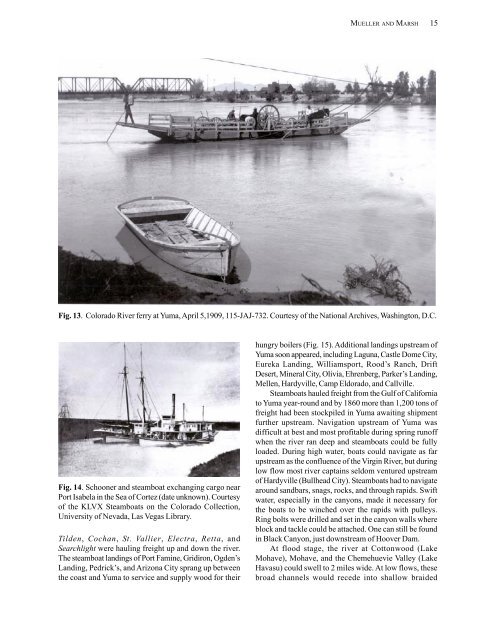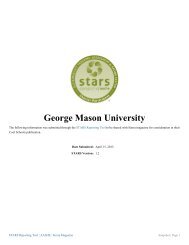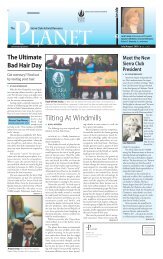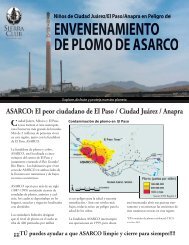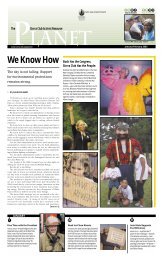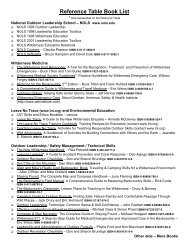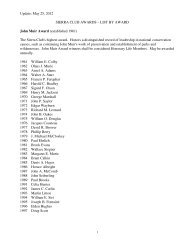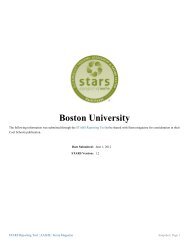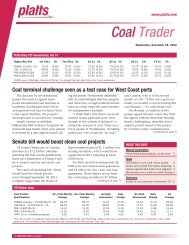Lost, A Desert River and its Native Fishes - Sierra Club
Lost, A Desert River and its Native Fishes - Sierra Club
Lost, A Desert River and its Native Fishes - Sierra Club
Create successful ePaper yourself
Turn your PDF publications into a flip-book with our unique Google optimized e-Paper software.
MUELLER AND MARSH 15<br />
Fig. 13. Colorado <strong>River</strong> ferry at Yuma, April 5,1909, 115-JAJ-732. Courtesy of the National Archives, Washington, D.C.<br />
Fig. 14. Schooner <strong>and</strong> steamboat exchanging cargo near<br />
Port Isabela in the Sea of Cortez (date unknown). Courtesy<br />
of the KLVX Steamboats on the Colorado Collection,<br />
University of Nevada, Las Vegas Library.<br />
Tilden, Cochan, St. Vallier, Electra, Retta, <strong>and</strong><br />
Searchlight were hauling freight up <strong>and</strong> down the river.<br />
The steamboat l<strong>and</strong>ings of Port Famine, Gridiron, Ogden‘s<br />
L<strong>and</strong>ing, Pedrick‘s, <strong>and</strong> Arizona City sprang up between<br />
the coast <strong>and</strong> Yuma to service <strong>and</strong> supply wood for their<br />
hungry boilers (Fig. 15). Additional l<strong>and</strong>ings upstream of<br />
Yuma soon appeared, including Laguna, Castle Dome City,<br />
Eureka L<strong>and</strong>ing, Williamsport, Rood‘s Ranch, Drift<br />
<strong>Desert</strong>, Mineral City, Olivia, Ehrenberg, Parker‘s L<strong>and</strong>ing,<br />
Mellen, Hardyville, Camp Eldorado, <strong>and</strong> Callville.<br />
Steamboats hauled freight from the Gulf of California<br />
to Yuma year-round <strong>and</strong> by 1860 more than 1,200 tons of<br />
freight had been stockpiled in Yuma awaiting shipment<br />
further upstream. Navigation upstream of Yuma was<br />
difficult at best <strong>and</strong> most profitable during spring runoff<br />
when the river ran deep <strong>and</strong> steamboats could be fully<br />
loaded. During high water, boats could navigate as far<br />
upstream as the confluence of the Virgin <strong>River</strong>, but during<br />
low flow most river captains seldom ventured upstream<br />
of Hardyville (Bullhead City). Steamboats had to navigate<br />
around s<strong>and</strong>bars, snags, rocks, <strong>and</strong> through rapids. Swift<br />
water, especially in the canyons, made it necessary for<br />
the boats to be winched over the rapids with pulleys.<br />
Ring bolts were drilled <strong>and</strong> set in the canyon walls where<br />
block <strong>and</strong> tackle could be attached. One can still be found<br />
in Black Canyon, just downstream of Hoover Dam.<br />
At flood stage, the river at Cottonwood (Lake<br />
Mohave), Mohave, <strong>and</strong> the Chemehuevie Valley (Lake<br />
Havasu) could swell to 2 miles wide. At low flows, these<br />
broad channels would recede into shallow braided


